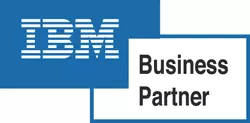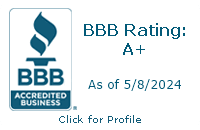I need to streamline a process – what tools can I use, and what outcomes can I expect?

I recently came across a presentation on process improvement I'd created and delivered many years ago. One of the slides was titled "Streamlining Processes" and it listed 12 key tools for process improvement.
Streamlining Tools
These 12 tools came from the book Business Process Improvement: The Breakthrough Strategy for Total Quality, Productivity, and Competitiveness, by H. James Harrington. The author introduces these streamlining tools by discussing principles of streamlining:
Streamlining suggests the trimming of waste and excess, attention to every minute detail that might lead to improved performance and quality. It suggests contouring to provide the smoothest flow, the least resistance to progress, and performance with the minimum amount of effort. (page 131)
These "12 cornerstone tools" are:
1. Bureaucracy Elimination – Remove unnecessary administrative tasks, approvals and paperwork.
2. Duplication Elimination – Remove repeated activities performed in different parts of the process.
3. Value – Added Assessment – Evaluate each activity to determine which ones your customers directly contribute to meeting customer requirements.
4. Simplification – Reduce the complexity of the process.
5. Process Cycle – Time Reduction – Identify ways to cut cycle time in order to meet or exceed customer expectations
6. Error Proofing – Make it difficult for incorrect work to flow through the process unidentified
7. Upgrading – Upgrade or acquire equipment to improve overall performance
8. Simple Language – Reduce overly complex verbiage and make documents easily understood.
9. Standardization – Ensure all employees are using the same methods to complete tasks.
10. Supplier Partnerships – Garbage In, Garbage Out...the overall performance of the process improves when its suppliers' input improves.
11. Big Picture Improvement – If the first 10 steps fail to produce the desired result (often after the process has already been improved), define what your ideal process would look like.
-
- A more common term for this tool is Reengineering.
12. Automation and/or Mechanization – Use computers and other equipment to complete routine tasks in order to free up employees to focus on more creative activities.
-
-
A more familiar description for this tool is Workflow Automation and/or System Integration.
-
The book suggests applying these tools in the order listed because the tools are listed by increasing effort or investment required to apply them.
Streamlining the Streamlining Tools
To me, the first 10 tools are all variations on the same theme – types of process improvements identified by a Business Process Review (BPR) project. At Todd Herman Associates (THA), a BPR is a common project. A BPR can be performed as a separate engagement, or as an early step of another type of project – the main difference is the scale of the BPR work.
For example, if a multi-location company is considering a new system to run its business, a dedicated BPR project will help get managers from all the locations thinking with the same mindset – what is the "current state" of how each location does business, and how does this compare with the "future state" they envision after a new system is selected and implemented.
Alternatively, if we are engaged to integrate two systems, we will need to conduct a short, informal BPR by asking questions to flush out issues and to define the desired outcome. After that, we will work with the client to resolve issues before we begin the integration work. After all, what's the point of beginning to integrate two systems if data has problems or the desired end result is not clear?
It may be that the BPR has identified enough process improvements so that streamlining tools 11 and 12 do not need to be considered. If so, great – mission accomplished! If not, keep in mind that Reengineering projects frequently use technology – such as Workflow Automation, System Integration, System Extension, and System Selection followed by System Implementation – to achieve big picture improvements.
Better – Cheaper – Faster
The preceding discussion centered on tools to use to streamline processes – now, let's consider outcomes you can expect from successfully streamlining a process.
Around 7 years ago, I wrote about "Todd's Hypothesis" which posits:
|
It is impossible to |
Reduce Process Cycle Time |
or... |
|
|
Improve Process Quality |
without also achieving... |
|
|
Lower Process Cost |
as a natural by-product |
Here's the key insight I had that led me to formulate my "hypothesis:"
Errors Gum Up Cost, Cycle Time, and Quality at the Same Time!
If you look at streamlining tools 5 and 6, they directly map to Cycle Time and Quality in my formulation. More broadly, one goal of any of the 12 tools is to reduce Cost – and, to me, becoming Faster or Better will inevitably yield being Cheaper.
Meet Any One Process Improvement Target – The Other Two Will Follow Automatically
Regardless of what streamlining tools you use, know this from "Todd's Hypothesis" – if you improve in one area, such as Cycle Time, you will also automatically improve in the other two areas, Quality and Cost.
Perhaps you have one or more key processes in your business you need to improve, yet lack the time or experience to tackle this work. Let's talk, because there's a good chance we can help.
Sincerely,
![]()
Todd L. Herman






